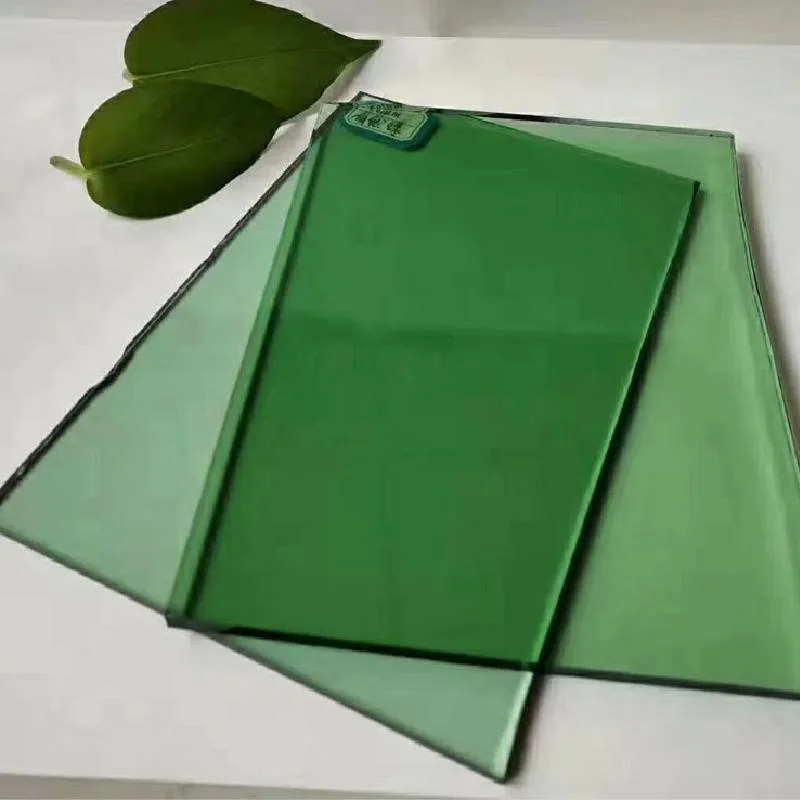The Art and Science of Architectural Colored Glass
Architectural colored glass has emerged as a captivating element in modern design, bridging the gap between functionality and aesthetics
. This unique material not only enhances the visual appeal of buildings but also fulfills practical purposes, making it a staple in contemporary architecture.
Colored glass has been utilized in architecture for centuries, from the intricate stained glass windows of medieval cathedrals to the sleek, polished facades of modern skyscrapers. However, advancements in technology and design have revolutionized its application, offering architects an array of possibilities. Today, colored glass is employed in various forms, including decorative panels, curtain walls, skylights, and glass partitions, allowing for endless creative expressions.
One of the primary advantages of colored glass is its ability to manipulate light. Sunlight filtering through colored glass creates stunning displays of color and light within interior spaces. This not only enhances the ambiance but also influences the mood of the occupants. For instance, warm hues can evoke feelings of comfort and tranquility, while cooler tones can promote focus and productivity. As such, the thoughtful integration of colored glass can significantly impact the overall experience of a space.
architectural colored glass
Moreover, colored glass is not merely a decorative element; it also serves functional purposes. The application of colored coatings can improve energy efficiency by reducing glare and heat gain, ultimately lowering energy costs. This sustainability aspect aligns with the growing trend towards eco-friendly building practices. Architects are now able to integrate colored glass in ways that adhere to green building standards while still achieving their artistic vision.
Another notable feature of architectural colored glass is its versatility. It can be customized to suit various design requirements, whether it's for residential, commercial, or public buildings. Techniques such as surface refinement, layering, and digital printing enable architects to realize complex designs and achieve specific effects, transforming ordinary spaces into extraordinary environments.
In addition, the use of colored glass fosters a dialogue between the built environment and nature. By reflecting surrounding landscapes and urban settings, these glass structures create a dynamic interplay of color and form, allowing buildings to harmonize with their environments while also standing out as unique artistic statements.
In conclusion, architectural colored glass is a powerful design tool that combines beauty with purpose. It transforms spaces, enhances the interplay of light and shadow, and contributes to sustainable building practices. As architecture continues to evolve, colored glass will undoubtedly play a pivotal role in shaping the aesthetic and environmental narratives of our built world.
 Afrikaans
Afrikaans  Albanian
Albanian  Amharic
Amharic  Arabic
Arabic  Armenian
Armenian  Azerbaijani
Azerbaijani  Basque
Basque  Belarusian
Belarusian  Bengali
Bengali  Bosnian
Bosnian  Bulgarian
Bulgarian  Catalan
Catalan  Cebuano
Cebuano  Corsican
Corsican  Croatian
Croatian  Czech
Czech  Danish
Danish  Dutch
Dutch  English
English  Esperanto
Esperanto  Estonian
Estonian  Finnish
Finnish  French
French  Frisian
Frisian  Galician
Galician  Georgian
Georgian  German
German  Greek
Greek  Gujarati
Gujarati  Haitian Creole
Haitian Creole  hausa
hausa  hawaiian
hawaiian  Hebrew
Hebrew  Hindi
Hindi  Miao
Miao  Hungarian
Hungarian  Icelandic
Icelandic  igbo
igbo  Indonesian
Indonesian  irish
irish  Italian
Italian  Japanese
Japanese  Javanese
Javanese  Kannada
Kannada  kazakh
kazakh  Khmer
Khmer  Rwandese
Rwandese  Korean
Korean  Kurdish
Kurdish  Kyrgyz
Kyrgyz  Lao
Lao  Latin
Latin  Latvian
Latvian  Lithuanian
Lithuanian  Luxembourgish
Luxembourgish  Macedonian
Macedonian  Malgashi
Malgashi  Malay
Malay  Malayalam
Malayalam  Maltese
Maltese  Maori
Maori  Marathi
Marathi  Mongolian
Mongolian  Myanmar
Myanmar  Nepali
Nepali  Norwegian
Norwegian  Norwegian
Norwegian  Occitan
Occitan  Pashto
Pashto  Persian
Persian  Polish
Polish  Portuguese
Portuguese  Punjabi
Punjabi  Romanian
Romanian  Russian
Russian  Samoan
Samoan  Scottish Gaelic
Scottish Gaelic  Serbian
Serbian  Sesotho
Sesotho  Shona
Shona  Sindhi
Sindhi  Sinhala
Sinhala  Slovak
Slovak  Slovenian
Slovenian  Somali
Somali  Spanish
Spanish  Sundanese
Sundanese  Swahili
Swahili  Swedish
Swedish  Tagalog
Tagalog  Tajik
Tajik  Tamil
Tamil  Tatar
Tatar  Telugu
Telugu  Thai
Thai  Turkish
Turkish  Turkmen
Turkmen  Ukrainian
Ukrainian  Urdu
Urdu  Uighur
Uighur  Uzbek
Uzbek  Vietnamese
Vietnamese  Welsh
Welsh  Bantu
Bantu  Yiddish
Yiddish  Yoruba
Yoruba  Zulu
Zulu 

